If your house has a shed which is a fair distance away from the main structure, getting power and light to it can be tricky. You can always use underground wires for electricity, but it is not the most economical and easiest way to power your shed. That's why; you should consider investing in a solar powered shed.
It is independent of your house’s electricity system, you have to deal with fewer cables, you don’t have to change the landscape or destroy your garden to install it, and it is cheaper. You will find out everything you need to know about solar powered sheds and which Jackery products are best to create your off-grid shed or workshop in this post.
What is a Solar Power Shed
A solar powered shed is an outbuilding or a workshop with a solar system that collects solar energy, converts it into electricity and stores it in batteries so you can power appliances, tools, and electrical instruments in the shed. It enables you to go off-grid, as you don't need an electrical connection from the main line or your house to power the outbuilding. A solar power shed is a great up-front investment for your house as it provides you with eco-friendly and cheap electricity based on your shed size.
For some people, their sheds are spaces to store tools and gardening equipment, but many people use them as their workshops for DIY work, personal spaces for relaxation and escape, and a place to get creative. However, you can't do all of that in a dark place with no light or electricity. You can install underground cables to connect it to the grid but it will be a hassle for you, and you will have to ruin your back garden to install it. A solar powered shed, on the other hand, can save you money and return your investment in the long run. Here are some of the benefits of solar powered sheds
- Save cost on electricity bills.
- Adds to the property value
- An efficient way to charge electric vehicles
- Eco-friendly and renewable energy generation
Based on how much you are willing to invest into building a solar powered shed, you can have two types of solar systems.
DC System Shed:
A DC system for solar power sheds is the cheaper option that you can install within 100$ to 300$ to power a few low-voltage lights in the shed. It has one or two panels that supply direct current and doesn't require complicated wiring or anything else. It is easy to set up and requires less investment, but it is not eligible for electric power tools or anything that requires high voltage. The only reason to avoid DC systems is that if you want to make them run-powered tools, you have to install a new system because you can't convert your DC system.
AC System Shed:
If you are willing to invest 3K to 5K dollars in your solar-powered shed, you can install an altering current or AC solar system to supply robust energy between 400 to 800 watts. It is the ideal option for those who use their shed as their workshop and require high-voltage current to run powered tools and electric drills etc. Installing a solar system on a shed is an easy process if your shed already has a south-facing roof. All you need is to buy the required solar system kit from Jackery, and you are good to go.
How Does a Solar Power Shed Work
If you are thinking of investing in your solar powered shed, you need to understand how it works so you can easily figure out everything. Let’s start with the first component of a solar system, the solar panels. A solar panel has multiple photovoltaic solar cells that can directly convert sunlight into electric current. It means as long as there is sufficient sunlight, the PV cells can easily absorb it and give an electric potential difference output.
When solar panels create DC current, it passes through wires and goes into an inverter. The inverter converts the direct current into an altering current that you can use to run home appliances or powered tools. There is also a charger controller that sends the converted electricity into a battery. You can use the battery to power the shed during the night when the sun is not out.
When you talk about a solar power shed, it means an outbuilding with a dedicated solar power system that supplies electricity to it without any grid connection. Suppose you already have a shed, all you have to do now is put on solar panels, layout the wiring, and install the inverter and batteries, and you have a self-sufficient energy system that doesn't give you any electricity bills.

How Many Watts Does a Shed Use
The most important thing that you should consider before installing a solar energy system, is how many watts your shed is going to need to power all the electric tools and appliances that you need running. When it comes to solar powered sheds, there is no one specific size that fulfills your requirement because your power needs depend on the type of shed you have and the nature of work that you do in it. Here are some common types of sheds with energy requirements.
Office Shed:
An office shed is for those people who work remotely and need a quiet space to work during the day. Instead of setting up a home office, having an office shed allows you to work without distractions and don't make changes around the house. Depending on the basic office equipment, a backyard or office shed requires 3000W to 4000W of solar power. Check out this energy consumption table to guess how much solar energy your office shed needs.
|
Appliances |
Watts |
|
LED Lights |
40W |
|
Ceiling Fan |
50W to 80W |
|
Electric Heater |
2000W to 3000W |
|
Coffee Machine |
600W |
|
Computer |
100W to 200W |
|
Scanner/Printer |
100W to 200W |
|
Charger for Phones and Tablets |
10W |
Workshop Shed:
If you are into DIY and you have a workshop shed, you need electricity to run the appliances as well as all of your power tools and electric equipment. Most of the electric tools in a workshop have high energy requirements. Even if you have a solar generator feeding energy to the shed, you still have to consider the amount of time you can run any electric tool before that power falls short. A regular workshop shed requires 4000W to 5000W power. If you install 250W solar panels on the roof of your shed, you will have enough solar energy to use your electric tools. Here is a table for the workshop shed energy requirements. Do remember that all electric tools have to start at Watts and running Watts.
|
Tools |
Starting Watts |
Running Watts |
|
Jigsaw |
300W |
300W |
|
Table Saw |
2700W |
1800W |
|
Electric Drill |
900W |
600W |
|
Circular Saw |
4200W |
1400W |
|
Orbital Sander |
2600W |
1200W |
|
Miter Saw |
1800W |
1800W |
|
Router |
1500W |
600W |
Garden Shed:
A garden shed is one of the most typical uses of an outbuilding that people use to keep their garden tools and supplies. If you are good with manual labor, you will have manual garden tools that don't require any electricity to run. However, if you have electric garden tools, then your shed requires a lot of solar energy so you can work on your garden without worrying about your electricity bills. If you are wondering how many watts for solar powered shed with garden tools, you are probably looking at 2000W to 4000W. Check out this table to estimate your garden shed energy needs.
|
Tools |
Starting Watts |
Running Watts |
|
Electric Leaf Blower |
0W |
2500W |
|
Weed Cutter |
600W |
500W |
|
Electric Mower |
0W |
1500W |
|
Electric Strimmer |
500W |
300W |
|
Hedge Trimmer |
600W |
450W |
|
Chainsaw (1.5HP) |
0W |
900W |
|
Cultivator (1.2HP) |
1400W |
700W |
How Much Does it Cost to Run A Shed
When you invest in a solar powered shed, you only have to spend money to purchase the solar power kit and pay an electrician for system installation. However, using Jackery products reduces the cost as it is easy to install and use, and you can do it yourself with a few instructions. If you don't have a solar generator for your shed and you want to power it from the grid, the initial cost will be low as you only have to pay for wires and circuits, but it will add to your monthly electricity bills.
The main factor that adds to the cost of running electricity to a shed is whether you are going to install the system yourself or you are going to hire a professional. When you hire a professional, you will have to pay a thousand dollars to install the system and get everything ready. The price will also be affected by the distance of your shed to the main house. The more remote your shed is from the house, the more you have to pay. Longer distance means you have to buy more cables and conduits, which adds to the cost of your project. Here is everything that determines the cost of your project.
- Hiring a professional
- Conduit
- Wires and Cables
- Materials and Supplies
How Much Solar Power Does a Shed Need
How many watts for the solar powered shed? If you want to know how much energy your shed needs to run all your appliances and tools for a required amount of time, you need to estimate the solar power kit or the generator you will use to provide that energy. It all depends on the working time of your solar power system. Some tools and appliances require thousands of watts to run, while some can run with just 10 watts. Solar panels can convert solar energy into electricity. A simple 50W solar power system is enough to power LEB bulbs. For a home office or workshop, you need multiple 250W solar panels with a battery to store electricity during the day so you can use it at night.
Can a Solar Generator Run a Shed
You can build a solar powered shed with a solar generator. If you are looking for ways to provide energy to your outbuilding or shed, a solar generator is the best economical and environmentally friendly choice. A solar generator is small, compact, and easy to use. It can generate electricity from sunlight and can create enough to power your house, let alone your shed. Based on how you want to use your shed, a solar generator can provide enough energy to run electric tools, home appliances, and office equipment.
Suppose you want to install a solar generator to run your shed, and you don't know which product is the best and which brand offers the best quality and performance. You are at the right place. Jackery is the leading global brand for energy and portable power, with lots of products that offer off-grid and clean energy. They also produce solar generators that are strong enough to power your house, RVs, and sheds. The reason you should invest in Jackery solar generators is that they are cheap, well-sorted, and can last decades without any issues.
With a solar generator, you can power your shed without adding to the electricity bills as it works off-grid. It is good for the environment as it doesn't involve burning fossil fuels, and it is portable enough that you can go camping for days without worrying about running out of electricity. The Jackery Solar Generator 2000 Plus is the compact yet powerful solar generator by Jackery that can charge most shed appliances for long hours.
|
Series |
Ports |
Capacity |
Appliance |
|
Jackery Solar Generator 2000 Plus |
AC Output (×4):120V~ 60Hz, 20A Max AC Output (×1):120V~ 60Hz, 25A Max USB-A Output (x2): Quick Charge 3.0, 18W Max USB-C Output(x2): 100W Max, (5V, 9V, 12V, 15V, 20V up to 5A) Car Port (x1): 12V⎓10A |
2042.8Wh |
|
Solar Powered Shed VS Solar Generator for Shed
The below diagram shows how a solar generator works.
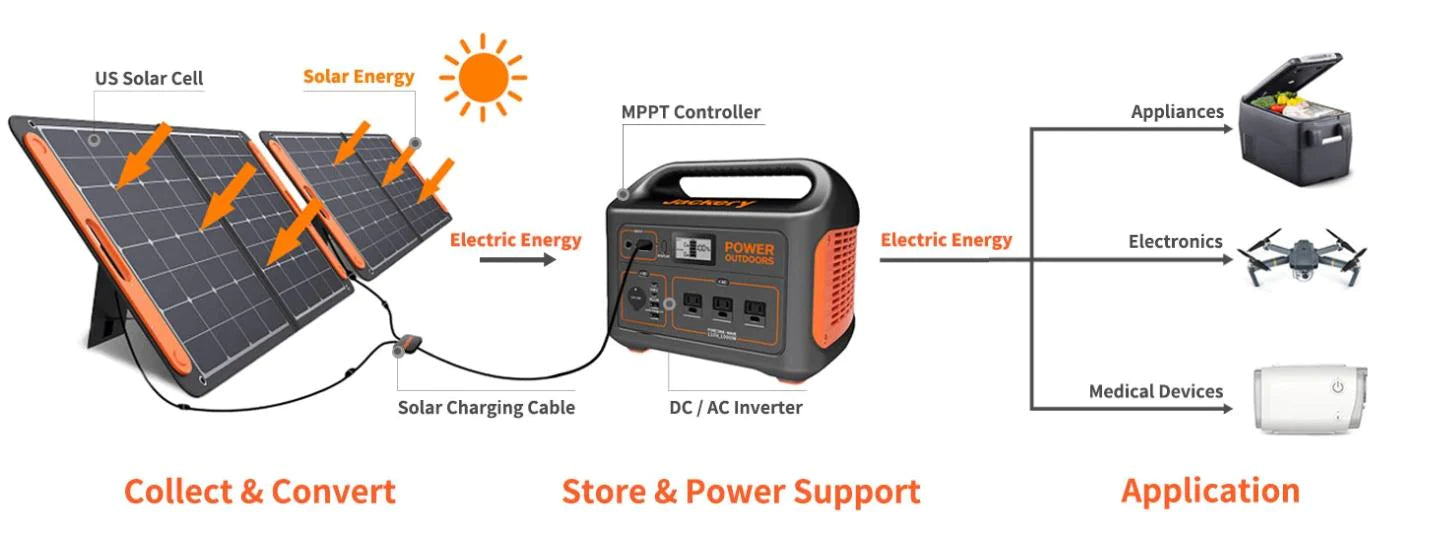
|
Types |
Pros |
Cons |
|
Solar Powered Shed |
· Best return on investment · Less operating cost · Help you make money from surplus energy · Clean energy, eco-friendly · Reduces your electricity bills |
· Needs a strong shed roof to hold the panels. · Requires a big initial investment. · Needs free space in the shed to house the inverter. |
| Solar Generator for Shed |
· Small and portable · Best for camping trips and outdoor adventures. · Helps you experience an off-grid lifestyle. · Eco-friendly and easy to store. · Pass-through charging |
· The initial investment is a bit expensive. |
Top Considerations When Building a Solar Powered Shed
When building a solar powered shed, you need to consider the following factors.
- Sunlight Exposure
You need to ideally position the solar panels to maximize sunlight exposure.
- Size of your Shed
Consider the size of your shed to decide how many solar panels it can hold without risking the roof structure.
- Installation Cost
Once you calculate your shed energy requirements, you can buy the proper equipment to save costs. It is better than buying extra panels when you clearly don't need them.
Solar Powered Shed FAQ
- What size of solar generator can I use to run my shed?
You can determine the required size of the solar generator to run your shed based on a simple calculation. It all depends on the working hours of the tools and appliances that are in the shed.
Working time = Capacity WH * 0.85 / operating wattage of your device
For example, assuming the power consumption of your coffee machine is 550W.
A Solar Generator 2000 Plus can power this coffee machine for
2042.8Wh * 0.85 / 550W = 3.1 hrs.
You can calculate the working time for all the appliances and add them together to find out the required generator size.
- Is it worth running a shed with a solar generator?
Running a shed with a solar generator is the best economical and eco-friendly choice. With Jackery solar generators, you can get a small and portable energy source that can run all of your shed appliances without any electricity cost. All you have to do is make the initial investment; don't worry about paying anything else.
- How long does a solar generator last?
All Jackery portable power stations and solar generators have lithium-ion batteries with a life span of 500-2000 full charge cycles. For the small initial investment, you get to enjoy clean and free electricity for multiple years before the battery gives out.
Final Thoughts
A solar generator is best for eco-friendly and cheap energy for your shed. It is compact, portable, and easy to install and use, and you can use it to power most of your electric tools and appliances. A solar powered shed helps you reduce your electricity bill by providing free electricity. It can run your appliance if you use your shed as a home office, workshop, or gardening shed. You can get the most reliable and high-quality solar generators from Jackery. They are the world’s leading portable system producers with more than 10 years of experience in excellence and reliability.






















































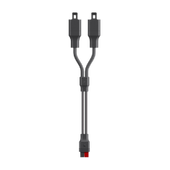
















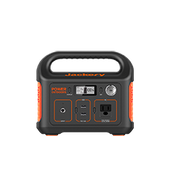
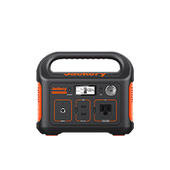










































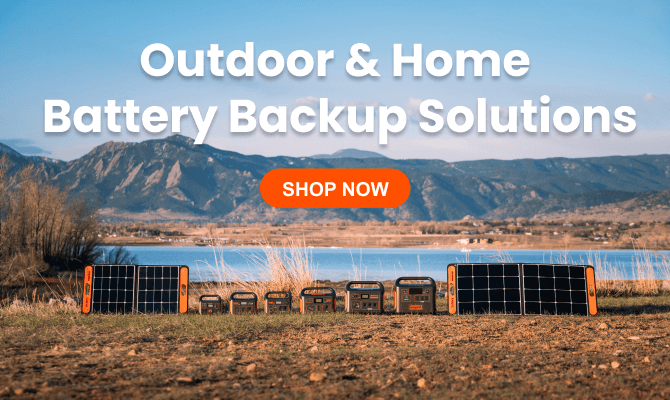
Hello. I’m considering installing a solar generator with solar panels to provide electrical power in a small, 2-door detached garage. While the 2 garage doors are currently manually operated, I’m considering adding garage door openers to both doors in the future. I’m not planning to run any appliances or electrical tools that pull a lot of watts, but do need to install lighting (currently considering DC lights) inside the garage as well as outside. My biggest concern is whether or not it is OK to leave solar panels plugged into the solar generator indefinitely as I do not want to have to unplug them when the solar generator’s batter is full. What are your suggestions on which solar generator to use and is it a problem to leave solar panels connected to a solar generator indefinitely? Thanks.
Leave a comment